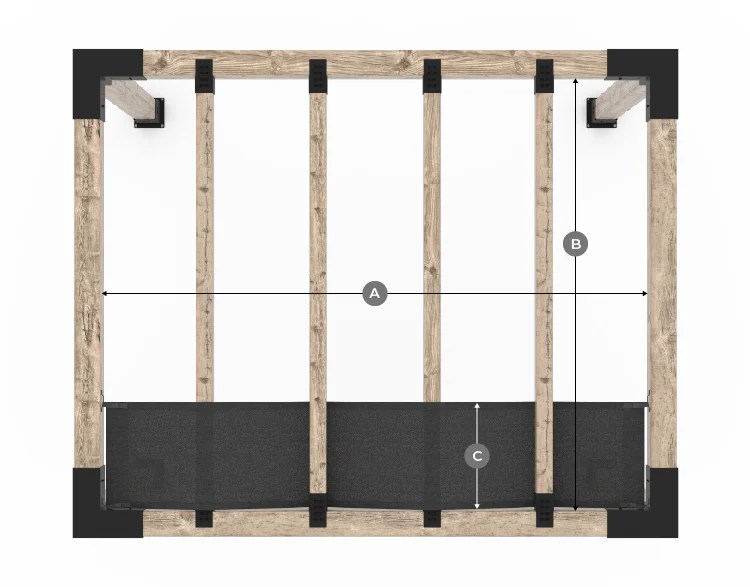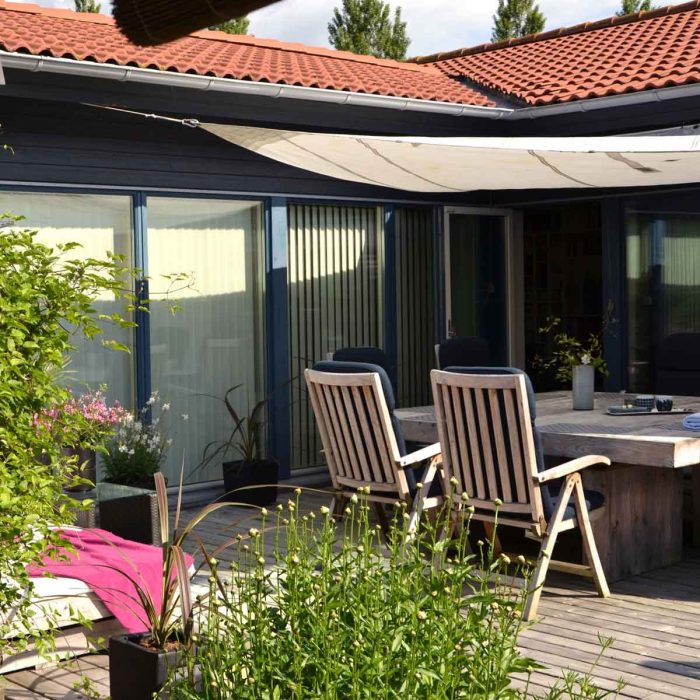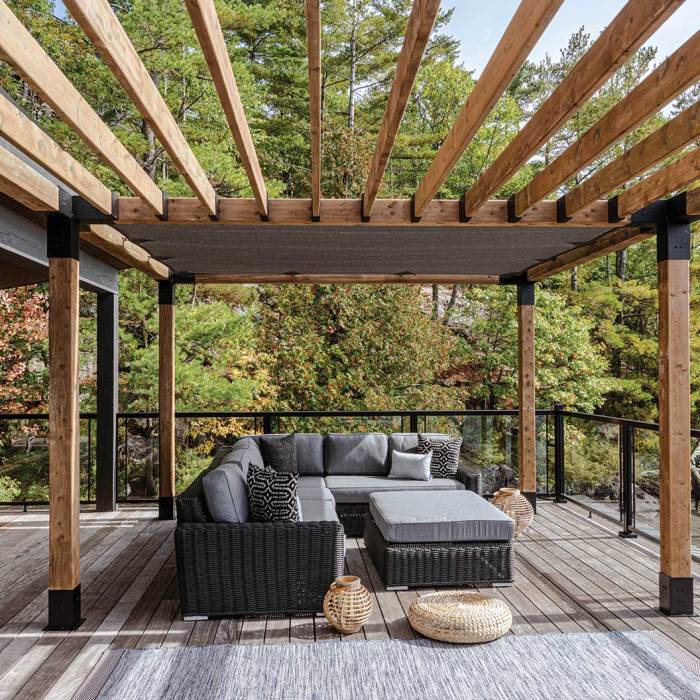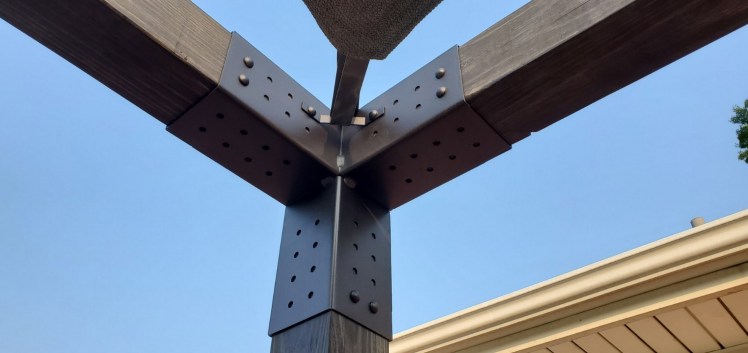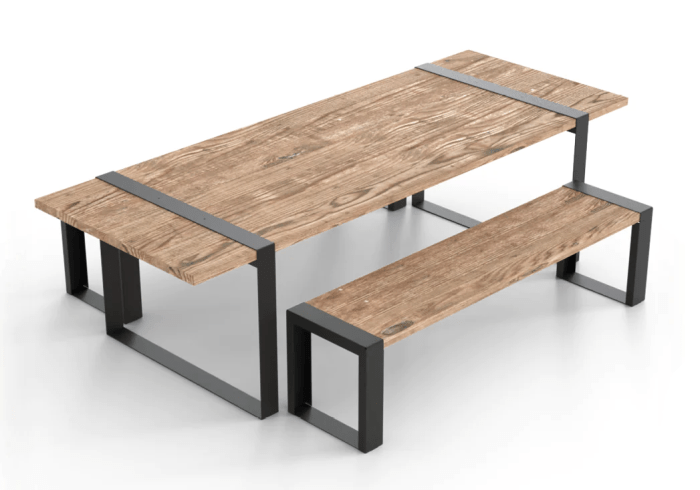Modular Pergola System Design & Installation
The modular pergola system offers a flexible and aesthetically pleasing way to enhance your outdoor living space. From patios to decks, these customizable structures adapt to various design needs and budgets. They are constructed from a variety of materials, including aluminum and wood, and their modular design allows for easy installation and modification. Understanding the different components, design considerations, and maintenance strategies will help you make informed choices when incorporating this innovative solution into your outdoor environment.
This guide provides a comprehensive overview of modular pergola systems, covering everything from initial design considerations and installation steps to long-term maintenance and cost analysis. Explore the diverse styles, materials, and applications to discover the perfect solution for your outdoor space.
Introduction to Modular Pergola Systems
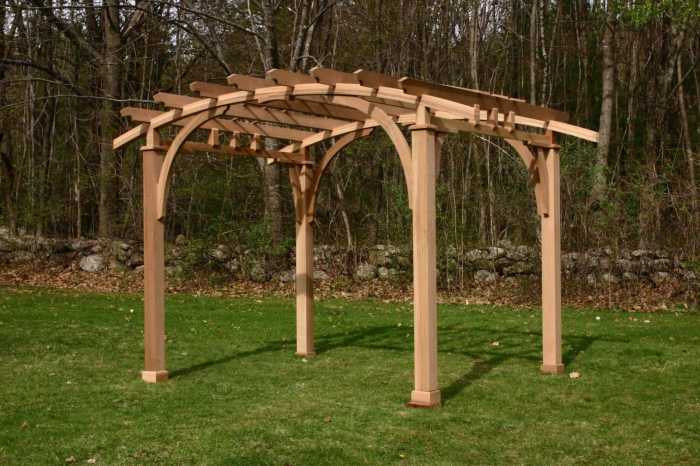
Source: trellisstructures.com
Modular pergola systems offer a flexible and efficient alternative to traditional pergola designs. These pre-fabricated structures are composed of standardized components, allowing for rapid assembly and customization to meet diverse architectural needs. They are increasingly popular for their aesthetic appeal, versatility, and cost-effectiveness.
Modular pergola systems are essentially pre-engineered, pre-fabricated structures. They consist of a series of interconnected modules that can be arranged to create various shapes and sizes. This modular approach enables homeowners and builders to achieve unique designs while maintaining quality and consistency.
Key Components and Features
Modular pergola systems typically comprise several key components. These include the frame, roofing elements, support structures, and potentially integrated features like retractable roofs or lighting. The frame, often constructed from aluminum or treated wood, provides the structural backbone of the pergola. Roofing materials such as glass, canvas, or composite materials are integrated to offer shade and protection from the elements. Support structures, such as posts and beams, ensure stability and support the weight of the pergola. Some advanced systems might incorporate automated features for adjusting shading or integrated lighting.
Benefits of Modular Pergola Systems
Modular pergola systems offer several advantages over traditional ones. These include faster installation times, reduced labor costs, and greater design flexibility. Pre-fabricated components streamline the construction process, minimizing on-site labor and time required for installation. The modular nature also allows for easier customization and adjustments to the design. Moreover, modular systems frequently come with warranties and support from the manufacturer, offering peace of mind for the consumer.
Materials Used in Modular Pergola Construction
A variety of materials are employed in the construction of modular pergolas. Aluminum is a popular choice for its strength, durability, and resistance to corrosion. Treated wood provides a traditional aesthetic but requires regular maintenance. Composite materials offer a balance between durability and low-maintenance properties. The choice of material often depends on the desired aesthetic, budget, and environmental conditions.
Pergola Styles and Modular Components
Different pergola styles lend themselves to specific modular components. The following table illustrates some common pergola styles and the corresponding materials used for their frames and roofing:
| Pergola Style | Frame Material | Roofing Material | Features |
|---|---|---|---|
| Modern | Aluminum | Glass | Sleek design, retractable roof, potential for integrated lighting |
| Traditional | Wood | Canvas | Rustic aesthetic, customizable shading, potential for intricate detailing |
| Contemporary | Aluminum or composite | Composite or Glass | Clean lines, various roof options, potential for modern aesthetics |
Design Considerations for Modular Pergola Systems
Modular pergola systems offer a flexible and adaptable solution for outdoor living spaces. Careful design consideration is crucial to maximizing functionality, aesthetics, and longevity. This section delves into the various design options, installation configurations, and crucial factors to consider when choosing the right system for your needs.
Choosing the appropriate design for a modular pergola system requires careful consideration of several key elements. The design process should incorporate both aesthetic appeal and practical functionality, aligning with the intended use of the pergola and the overall architectural style of the surrounding environment.
Design Options, Modular pergola system
Modular pergola systems allow for a wide array of design options. These systems can be customized to create structures ranging from simple sunshades to elaborate multi-level structures. The variety of available materials, sizes, and configurations contributes to this extensive design flexibility. Key design options include:
- Fixed versus retractable roofs: Fixed roofs provide permanent shade, while retractable roofs offer the flexibility to adjust shade coverage based on weather conditions or desired ambiance.
- Open versus enclosed designs: Open designs allow for more natural ventilation and views, while enclosed designs provide a more private and sheltered space.
- Different column heights and styles: Varying column heights and styles can be incorporated to create a visually appealing structure, accommodating diverse architectural preferences.
- Customizable canopy sizes and shapes: Customizing canopy sizes and shapes allows for a tailored solution to specific space requirements, offering diverse shade coverage options.
Factors Influencing Design Choice
Several key factors significantly influence the design choices for modular pergola systems. A thorough understanding of these factors is essential for making informed decisions.
- Space constraints: The available space plays a crucial role in determining the size and layout of the pergola. Considerations include the width, depth, and overall dimensions of the area to be covered. Modular designs allow for adaptability to various space constraints, accommodating smaller yards or patios.
- Budget: The budget allocated for the pergola system directly impacts the choice of materials, size, and complexity of the design. Cost-effective materials, pre-fabricated modules, and simpler designs can significantly reduce the overall cost.
- Aesthetic considerations: The desired aesthetic appeal of the pergola should align with the surrounding architecture and landscaping. Material selection, color schemes, and structural details can contribute significantly to the overall aesthetic.
Installation Configurations
Various installation configurations influence the pergola’s functionality and overall impact on the outdoor space. Proper planning ensures optimal use of the pergola system.
- Single-span versus multi-span designs: Single-span designs are ideal for smaller spaces, while multi-span designs offer increased coverage for larger areas. Multi-span designs are more complex and require careful structural considerations.
- Attachment methods: Different attachment methods (e.g., ground-mounted, wall-mounted) influence the pergola’s structural stability and the overall design.
- Integration with other structures: Integrating the pergola with existing structures (e.g., patios, decks) enhances functionality and creates a seamless outdoor living space.
Structural Stability
Structural stability is paramount in modular pergola designs. A well-designed and robust structure ensures the pergola’s longevity and safety.
- Material selection: Choosing materials with appropriate strength and load-bearing capacity is crucial. Materials like aluminum, steel, or treated wood offer varying levels of structural integrity.
- Proper anchoring: Ensuring proper anchoring to the ground or wall ensures stability, especially in high-wind areas.
- Engineering calculations: Engineering calculations are essential to determine the structural load capacity required for the specific design and environment. This ensures the pergola can withstand expected loads without compromising stability.
Design Element Impact and Solutions
| Design Element | Impact | Possible Solutions |
|---|---|---|
| Space constraints | Limited area | Smaller module sizes, multi-section designs |
| Budget | Cost-effectiveness | Selecting cost-effective materials, pre-fabricated modules |
| Aesthetic considerations | Desired visual appeal | Matching materials to existing architecture, custom design options |
| Structural stability | Safety and longevity | Appropriate material selection, rigorous engineering calculations, and proper anchoring |
Installation and Maintenance of Modular Pergola Systems
Modular pergola systems offer a convenient and efficient way to add outdoor living space. Proper installation and ongoing maintenance are crucial for ensuring the longevity and structural integrity of these systems, maximizing their lifespan and value.
Installation Steps
The installation process for a modular pergola system typically involves several key steps. First, the foundation is prepared according to the manufacturer’s specifications. This often involves pouring concrete footings or using existing concrete slabs. Once the foundation is ready, the support posts are carefully positioned and anchored to the foundation. These posts serve as the structural backbone of the pergola. Next, the modular beams and rafters are assembled, ensuring they are securely connected to the posts. Then, the roofing panels are attached, following the manufacturer’s guidelines for proper alignment and spacing. Finally, the system is inspected for stability and alignment before completing the installation.
Visual Representation of the Installation Process
Imagine a series of interconnected posts, like the legs of a large table, embedded firmly into the ground. These posts are connected by beams, forming a framework. These beams are, in turn, connected to rafters, which support the roofing panels. Visualize the roofing panels being fitted onto the rafters, creating a protective canopy. Each step involves precise measurements and careful assembly to guarantee structural integrity.
Necessary Tools and Equipment
A variety of tools and equipment are essential for a successful installation. These include, but are not limited to, concrete mixers, levels, measuring tapes, power drills, screwdrivers, and safety equipment like work gloves and safety glasses. Specific tools might vary depending on the specific system and its design.
Anchoring for Structural Integrity
Proper anchoring is paramount for the structural integrity of the pergola system. This involves ensuring that the support posts are firmly embedded in the foundation. Adequate concrete depth and reinforcement are vital to withstand anticipated loads, such as wind and snow. The foundation must be strong enough to support the anticipated weight of the entire structure, accounting for any potential future additions.
Long-Term Maintenance Strategies
Different materials require different maintenance strategies. Wood, for example, needs regular sealing and staining to prevent rot and decay. Aluminum or steel frames require less frequent maintenance but may need periodic cleaning to prevent rust. Consider using weather-resistant coatings and protective finishes to prolong the life of your pergola.
Maintenance Schedule
The following table provides a recommended maintenance schedule for modular pergola systems. Adhering to this schedule will help ensure the longevity and aesthetic appeal of your pergola.
| Maintenance Task | Frequency | Tools Required |
|---|---|---|
| Cleaning | Monthly | Soft brush, water, mild detergent |
| Checking structural integrity | Quarterly | Visual inspection, level |
| Inspecting fasteners | Semi-annually | Screwdriver, wrench (as required) |
| Sealing/staining (wood) | Annually | Appropriate sealant/stain, brushes, applicators |
| Rust removal (metal) | As needed | Wire brushes, sandpaper, rust-removing solutions |
Applications and Uses of Modular Pergola Systems
Modular pergola systems offer a versatile and adaptable solution for enhancing outdoor living spaces. Their pre-fabricated nature and customizable design options allow for diverse applications, from simple shade structures to complex multi-functional outdoor areas. This adaptability makes them highly attractive for a wide range of residential and commercial settings.
Modular pergola systems can be tailored to fit a multitude of needs and aesthetic preferences, from a basic patio cover to a sophisticated outdoor dining area. Their modular design allows for a degree of flexibility in terms of size, shape, and style, making them suitable for integration into existing landscapes or for creating entirely new outdoor environments.
Applications in Various Environments
Modular pergola systems are not limited to a single application. Their design and construction allow for their integration into a variety of environments. From residential patios to commercial courtyards, these systems can provide shade, protection from the elements, and a visually appealing addition to the outdoor space. They can be incorporated into diverse architectural styles, complementing existing structures or forming a unique focal point.
- Residential Patios: Modular pergolas are a popular choice for patios, providing shade and extending usable outdoor living space. They can be customized with various materials and designs to match the overall aesthetic of the patio and surrounding landscape. For example, a simple, minimalist design can seamlessly blend with a modern patio, while a more ornate design can elevate a traditional patio setting.
- Decks: Modular pergolas can also enhance decks by providing shade and protection from the elements. Their integration with decks can be seamless, extending the usability of the deck into the evenings or during inclement weather. The design can be adjusted to fit the existing deck railing and overall structure for optimal aesthetics and functionality. For instance, a pergola could be designed to allow for the installation of overhead lighting, further extending the deck’s use in the evenings.
- Commercial Courtyards: Modular pergolas can transform commercial courtyards into inviting and functional outdoor spaces. The design can be tailored to meet specific needs, such as providing shade for outdoor seating areas, creating covered walkways, or even integrating with landscaping elements.
- Pool Decks: Modular pergolas can provide shade around pools, extending the usability of the pool area. The structure can be integrated with poolside furniture, creating a comfortable and inviting outdoor space for relaxing and socializing.
Customization Options
The modular nature of these systems allows for significant customization. This includes options for materials, colors, sizes, and structural configurations. The flexibility to adjust the pergola’s design elements to match the specific needs and preferences of the user is a key advantage.
- Material Options: Modular pergola systems can be constructed from a variety of materials, including wood, aluminum, and steel. The choice of material will influence the aesthetic appeal and durability of the structure. For example, aluminum pergolas are known for their resistance to weather and rot, while wooden pergolas can offer a more natural and warm aesthetic.
- Design Variations: The design of modular pergolas can be tailored to match specific architectural styles. This includes options for different roof styles, column designs, and the incorporation of lighting and other accessories.
- Integration with Other Structures: Modular pergolas can be seamlessly integrated with other outdoor structures, such as gazebos, fire pits, and outdoor kitchens. This allows for the creation of a cohesive and well-designed outdoor living space.
Integration with Other Outdoor Structures
Integrating modular pergolas with other outdoor structures can significantly enhance the overall design and functionality of the outdoor space. Careful planning and design are crucial to ensure a harmonious blend.
- Gazebos: A pergola can complement a gazebo by providing additional shade and covered space. The design of the pergola can be integrated with the gazebo’s existing features to create a cohesive outdoor living space.
- Fire Pits: Pergolas can be positioned near fire pits to create a comfortable and inviting outdoor seating area, providing both shade and ambiance.
- Outdoor Kitchens: Pergolas can be designed to incorporate outdoor kitchens, offering shade and protection from the elements for food preparation and dining areas.
Examples of Enhanced Outdoor Living Spaces
Modular pergolas can transform ordinary outdoor spaces into exceptional outdoor living areas.
- Creating an Outdoor Dining Area: A pergola with retractable shade systems can be designed to transform a patio into an inviting outdoor dining area, protecting from the sun and rain.
- Enhancing a Poolside Retreat: A pergola with lighting and seating areas can transform a poolside space into a tranquil retreat.
- Extending Deck Space: A pergola can expand the usable space of a deck, providing shade and a sheltered area for relaxation and entertainment.
Summary Table
| Application | Benefits | Design Considerations |
|---|---|---|
| Patios | Increased outdoor living space, shade, and protection from elements | Size, style, integration with patio furniture, lighting, and other features |
| Decks | Extended outdoor living area, shade, and protection from elements | Compatibility with deck design, safety features, and access |
| Commercial Courtyards | Improved aesthetics, shade, and functional space | Size, style, and integration with existing landscaping and buildings |
| Pool Decks | Shade, protection from the sun, and increased usability | Integration with pool furniture, safety features, and aesthetics |
Cost and Budget Considerations for Modular Pergola Systems
Modular pergola systems offer a flexible and attractive outdoor living solution, but understanding the associated costs is crucial for a successful project. Factors such as material selection, desired features, and installation complexity all play a significant role in determining the final price. A thorough cost analysis helps ensure the project stays within budget and aligns with expectations.
Factors Influencing Pergola System Costs
Several key elements contribute to the overall cost of a modular pergola system. Material selection is paramount, as different materials have varying price points. The size and complexity of the design, including the number and type of modules, also significantly affect the total cost. Furthermore, labor costs for installation, any necessary site preparation, and permits required for local regulations will add to the budget. The level of customization and desired features, such as lighting, heating, or retractable screens, also influence the total cost.
Material and Module Cost Comparison
Different materials offer varying levels of durability, aesthetics, and cost. Aluminum pergolas are typically lightweight and low-maintenance, leading to a generally lower initial cost per square foot compared to wood. However, wood pergolas often provide a more natural and aesthetically pleasing look, and customization options are usually more extensive. The choice of materials should be carefully evaluated based on the desired aesthetic, lifespan, and budget constraints.
| Material | Estimated Cost/sq ft (USD) | Advantages |
|---|---|---|
| Aluminum | $25-$50 | Lightweight, durable, low maintenance, readily available in various finishes, corrosion resistant |
| Wood (Pressure-Treated Lumber) | $40-$75 | Aesthetically pleasing, customizable, often offers greater design flexibility, can be stained or painted to match existing decor |
| Composite (e.g., PVC, WPC) | $45-$65 | Durable, low-maintenance, resistant to rot, warping, and insect damage, attractive aesthetic options, often mimic wood grain. |
Financing Options and Savings
Financing options for pergola projects can be explored to manage the investment effectively. Consult with financial institutions to assess various loan options and understand associated interest rates and repayment terms. Often, projects can be broken down into phases to manage payments more easily. Additionally, exploring potential savings through bulk purchasing of materials or opting for less elaborate features can significantly reduce the project’s total cost.
Estimating Total Project Cost
A precise estimate of the total project cost requires a detailed assessment of all project components. This involves gathering quotes from multiple contractors for labor and materials, accounting for permits and site preparation, and creating a comprehensive list of all desired features. A professional consultation with a qualified contractor or designer can help create a realistic and detailed budget that accounts for all foreseeable costs. Remember to include contingency funds for unforeseen expenses. For instance, if the site requires significant excavation or additional structural support, these factors need to be incorporated into the estimate.
Ending Remarks
In conclusion, modular pergola systems offer a compelling alternative to traditional pergolas, combining customization, versatility, and practicality. Their modular nature facilitates design flexibility, while various materials cater to diverse aesthetics and budgets. From initial design choices to installation and maintenance, this detailed guide empowers you to make informed decisions. Ultimately, a well-designed modular pergola system can transform your outdoor space into a captivating and functional extension of your home.
